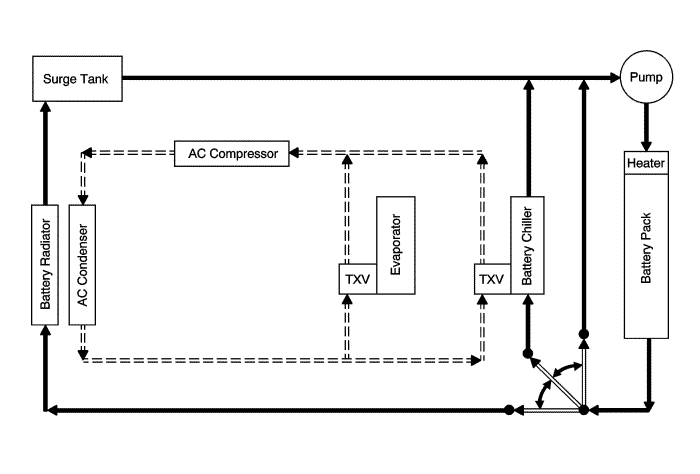Volt |
||||||||
|
|
|
|||||||
This vehicle is equipped with three fully independent cooling systems. The power electronics cooling system is dedicated to cooling the battery charger and the power inverter module. The battery cooling system is dedicated to cooling and heating the high-voltage battery. The engine cooling system is dedicated to cooling the engine and providing heat to the passenger compartment.
The battery cooling system uses a radiator, two 12 volt pulse width modulated (PWM) radiator fans, a 12 volt coolant pump, a refrigerant/coolant heat exchanger (chiller) and a coolant flow control valve to cool down the high-voltage battery. There is also a high-voltage heater inside the battery to heat the coolant entering the battery when needed. The Vehicle Integration Control Module (VICM) monitors the battery coolant temperature, battery cell temperature, refrigerant temperature and refrigerant pressure. The VICM determines how much battery cooling or heating is required and turns on the coolant pump, positions the coolant flow control valve and depending on what is required, will signal the Engine Control Module (ECM) to operate the radiator fans, request the A/C Compressor Module (ACCM) to turn on the high- voltage A/C compressor or turn on the high-voltage heater. The battery cooling system could be activated when the vehicle is on and during charging.
The battery cooling system circulates a pre-mixed Dexcool® which is a 50/50 mixture of Dexcool and deionised water. Deionised water is required for high-voltage isolation and to prevent corrosion from affecting heat sink performance. Always use pre-mixed coolant and never use tap water in the battery coolant system.

| © Copyright Chevrolet. All rights reserved |